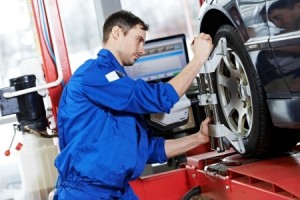Cruise Control Reduces Speed, Increases Driver Drowsiness
 Most cars these days are equipped with cruise control, which allows a driver to set the speed of the vehicle without having to maintain constant contact with the gas pedal. In fact, you may be surprised to learn that cruise control technology was first introduced 100 years ago. Cruise control is a useful tool for drivers, especially on long road trips, but new data out of France reveals that the convenience comes at a price.
Most cars these days are equipped with cruise control, which allows a driver to set the speed of the vehicle without having to maintain constant contact with the gas pedal. In fact, you may be surprised to learn that cruise control technology was first introduced 100 years ago. Cruise control is a useful tool for drivers, especially on long road trips, but new data out of France reveals that the convenience comes at a price.
A study by the Vinci Autoroutes Foundation found that cruise control or speed-limiting vehicles led to an increased risk that the driver would become drowsy, and it also significantly increased a driver’s reaction time.
For their study, the foundation divided 90 drivers into three groups based on their age. The drivers were then put through a driving simulator over a three-day period. They were asked to drive 75 miles each day, and in the simulator they encountered construction, a bus accident, a tollbooth, and radar. Drivers were hooked up to equipment to monitor eye movement and brain activity to aid in data collection. They were also asked to rate their level of vigilance every 15 minutes.
After looking at the data, researchers found:
- All participants exhibited greater signs of drowsiness when using cruise control.
- The average level of self-reported vigilance decreased significantly as time passed. The most common response at the beginning of the trip was that the participant was feeling “rather awake,” but that changed to “neither awake nor asleep” only 30 minutes into the drive.
- When using cruise control, all drivers took longer to brake for the simulated encounters. By the end of the trip, drivers were breaking roughly 85 yards closer to the incident location.
- Young drivers between the ages of 18-30 were the most affected by the fatigue of the trip.
Andre Dufour, the lead researcher of the study, said cruise control can help people avoid speeding tickets, but drivers must take extra precautions to stay alert.
“They help people to obey the speed limit,” said Dufour. “But you have to know how to use them.”
He added that even though the vehicle can help complete some functions normally reserved for the driver, “the person is still in charge and still responsible.”
Related source: ABC News
-
Storms Damage Cars Across Southern Minnesota
 Jun 16, 2014
Jun 16, 2014Hopefully you were able to get your car in a garage this weekend, but if your vehicle was an unfortunate casualty of a falling tree branch, let Affordable Auto Service get it looking like new again. According to KSTP, several vehicles were damaged by the storm and more than 100,000 homes lost power as windy […]
-
Common Alignment Issues in Cars
 Nov 6, 2013
Nov 6, 2013Alignment issues can make your daily commute dangerous, as they can cause your car to pull to the right or left. Driving a car on the highway is difficult enough without trying to compensate for a car that seems to have a mind of its own. Below, we discuss some common ways your car gets […]
-
The Benefits of an Engine Flush
 Aug 12, 2015
Aug 12, 2015Your engine is the lifeblood of your vehicle, so it makes sense that you should take extra care of it. Considering all the tasks your engine is asked to preform, it’s no surprise that junk and debris can build up over time in your engine system. One way to get rid of that excess build up […]




